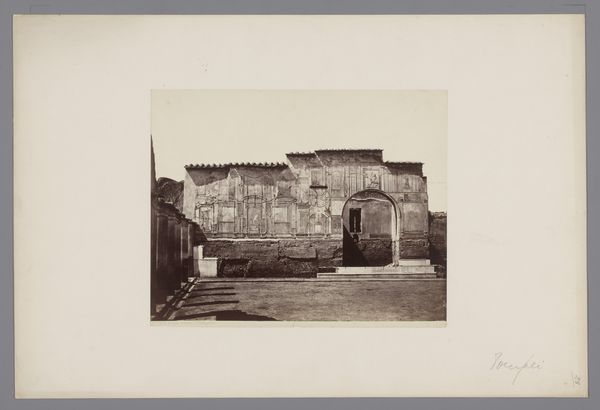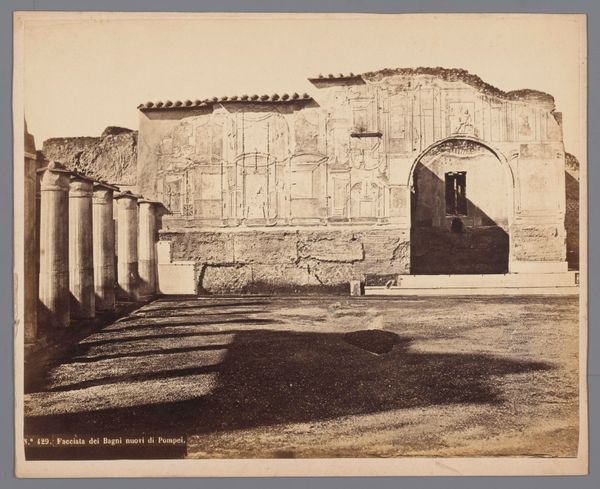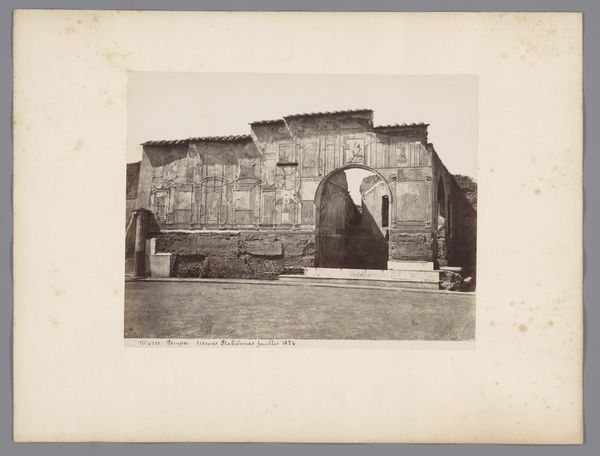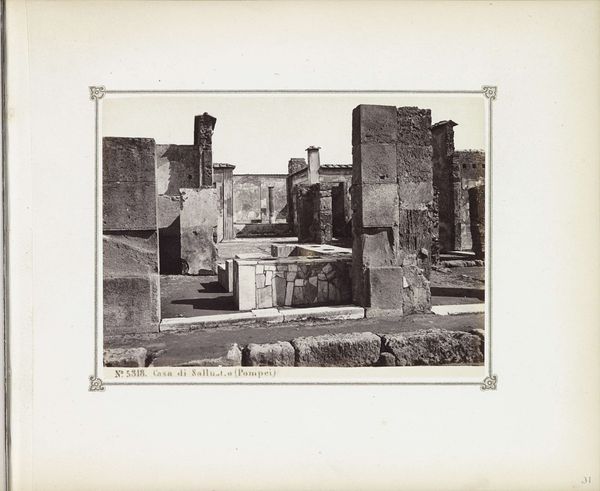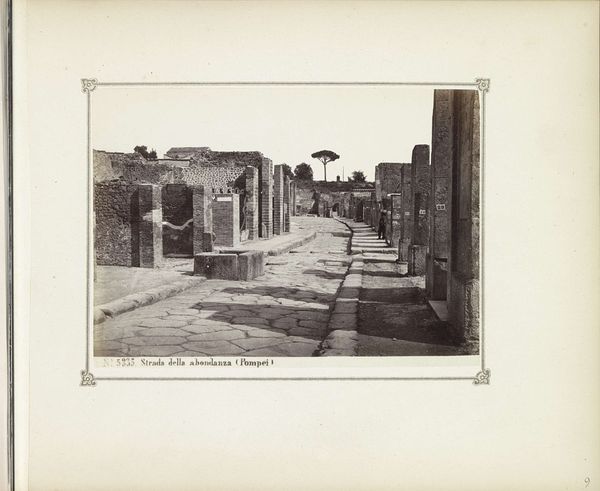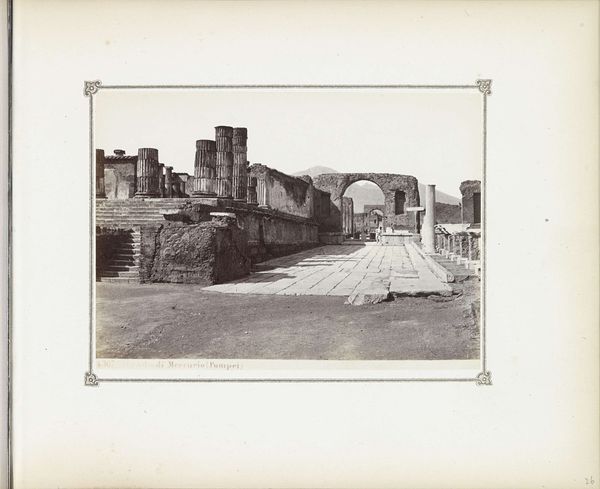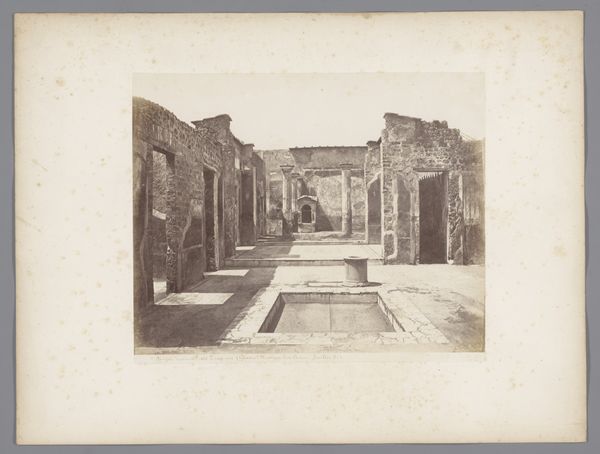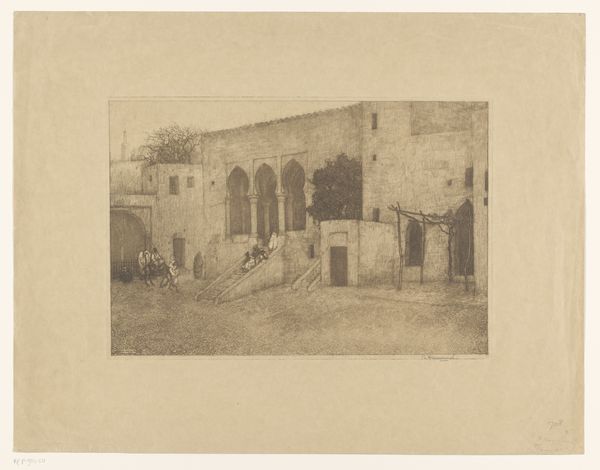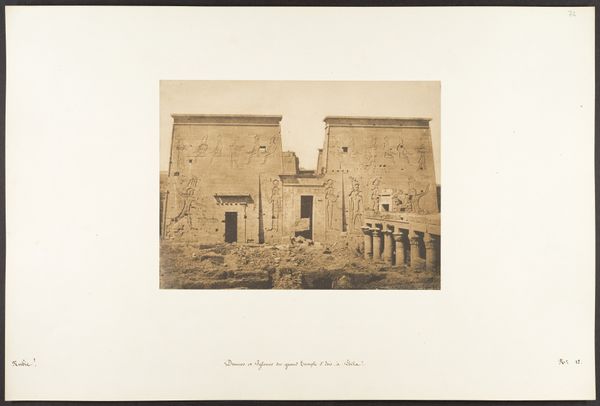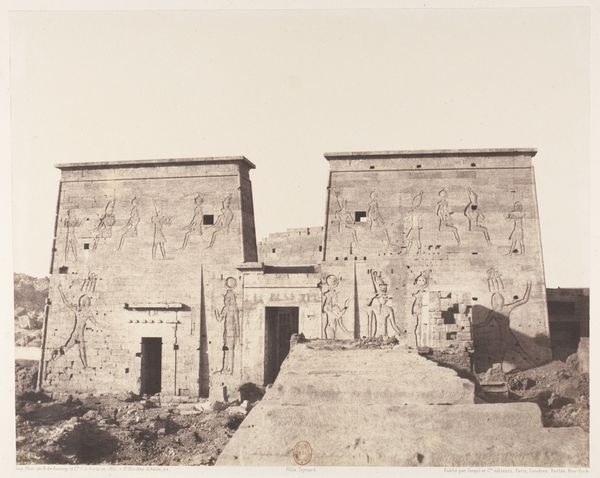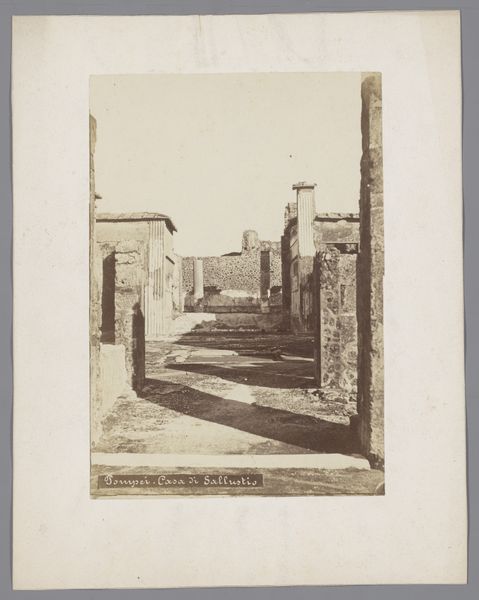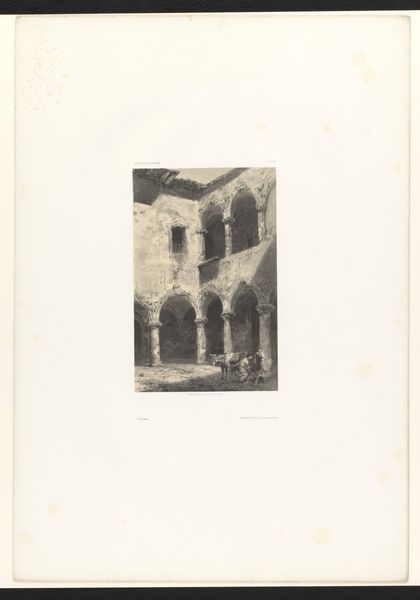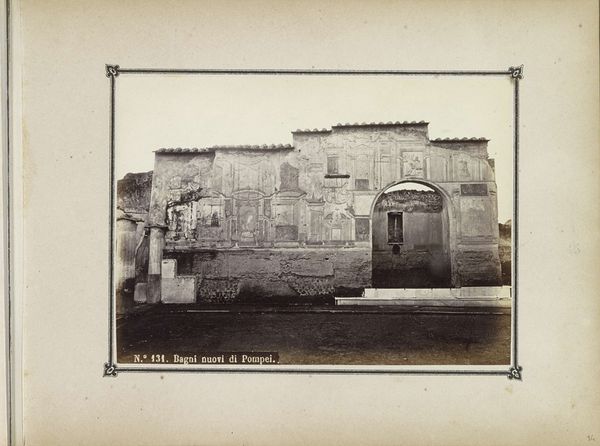
photography, site-specific, gelatin-silver-print
#
landscape
#
photography
#
ancient-mediterranean
#
site-specific
#
gelatin-silver-print
Dimensions: height 103 mm, width 138 mm
Copyright: Rijks Museum: Open Domain
Curator: Here we have a photograph by Giorgio Sommer, dating from around 1860 to 1900, entitled "Restanten van een badhuis in Pompeï," or "Remains of a bathhouse in Pompeii." It is a gelatin-silver print, and part of the Rijksmuseum's collection. Editor: It's immediately striking, this photograph. Stark and desolate. The contrast between light and shadow really emphasizes the ruined state of the architecture, its geometries still visible but heavily degraded. It's imbued with a powerful sense of loss, wouldn't you say? Curator: I'm drawn to the geometric clarity and how Sommer framed the composition to draw attention to the modular wall paintings. The careful consideration given to light exposure illuminates the interplay between the wall's decorative program and its structural function. The remnants articulate principles of order. Editor: Order imposed by a power structure—one that relied on enslavement and deep social inequality. These ruins testify not just to the eruption, but to the fragility of power and privilege built on exploitation. The leisure this bathhouse facilitated came at a human cost, one often ignored in classical idealizations. Curator: Indeed, but it is useful to investigate how light functions to emphasize the wall. The texture of the damaged plaster creates such rich tonal gradations when the light grazes its surface. Observe the delicate transition in tone and shading... It is a marvel, from a purely photographic perspective. Editor: And that's precisely where the image becomes complicated, isn't it? To focus *purely* on aesthetics risks divorcing the art from its profoundly entangled political roots, which remain visible, literally embedded within the remains in the photograph. Who held power and who was excluded at the time it was taken? This photograph tells that story as well. Curator: I appreciate how the photograph offers a moment of consideration. The architectural structure communicates strength, and the gelatin-silver medium and classical elements contribute to an elevated sensibility. Editor: Absolutely, I leave here questioning how sites and artifacts of ancient luxury can teach us not to just admire technique, but to question and resist the power imbalances that made such extravagance possible.
Comments
No comments
Be the first to comment and join the conversation on the ultimate creative platform.
